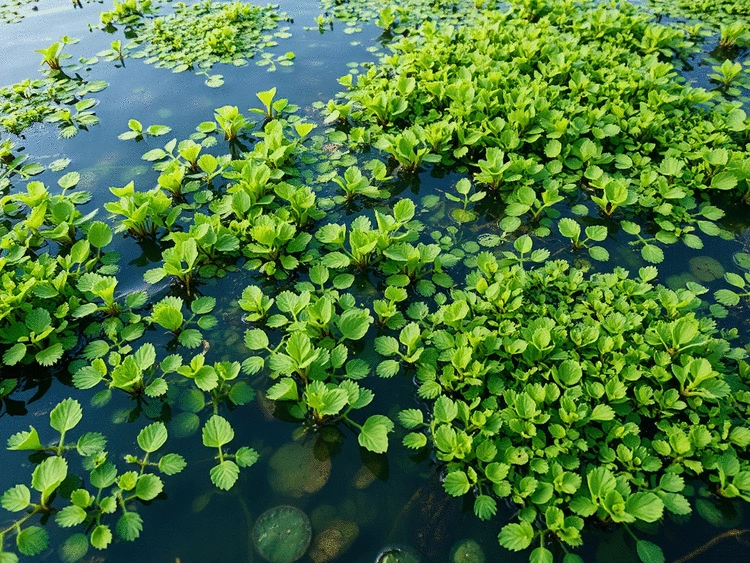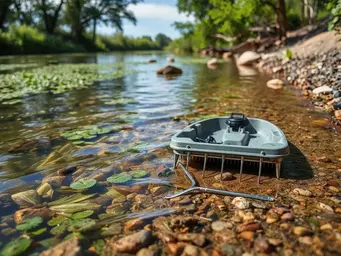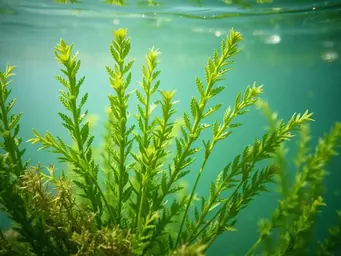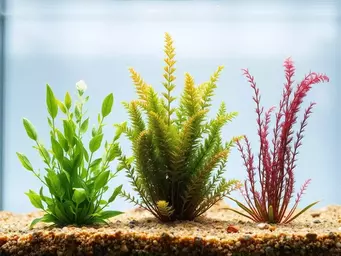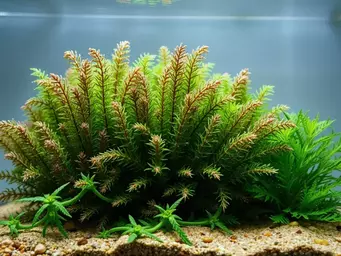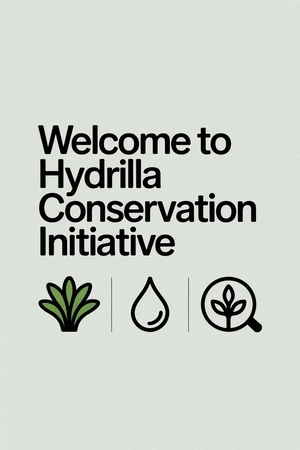Every year, invasive species like hydrilla rise and fall with the seasons, but do we truly understand how these cycles impact our ecosystems? This article delves into the seasonal variations of hydrilla and offers critical insights for effective management and identification.
What You Will Learn
- Hydrilla can grow up to a foot per day under optimal conditions, making early identification crucial.
- Seasonal behaviors of hydrilla: vigorous growth in spring, peak foliage in summer, color changes in fall, and dormant structures in winter.
- The environmental impact of hydrilla: decreased biodiversity, harm to fish populations, and obstruction of recreational activities.
- Key identification traits include whorled leaves in groups of five to seven, slender stems, and small white flowers in summer.
- Year-round monitoring of hydrilla is essential for effective management and control to protect native ecosystems.
- Community education and awareness efforts can significantly aid in reporting hydrilla sightings and fostering proactive management strategies.
Seasonal Hydrilla Appearance and Growth Cycle
Understanding how hydrilla changes throughout the year is key to effective management. Below is a visual guide to its seasonal characteristics.
Season 1 Spring: New Growth & Emergence
Hydrilla vigorously emerges with tender stems and leaves. Early detection is crucial.
Season 2 Summer: Peak Growth & Mat Formation
Established plants develop dense foliage, often forming mats. Flowers may appear.
Season 3 Fall: Preparation for Dormancy
Leaves may change color, signaling the plant's shift towards dormancy. Turions form.
Season 4 Winter: Survival & Dormant Structures
Above-ground growth may die back, but tubers and turions survive underground.
Understanding Seasonal Variations in Hydrilla Appearance
As an aquatic biologist, I've spent years studying the complexities of hydrilla and its impact on freshwater ecosystems. Understanding how seasonal variations affect hydrilla's growth and appearance is crucial for effective management and control. By recognizing the signs of hydrilla throughout the year, environmental professionals and educators can take proactive steps to safeguard our waterways.

So, what exactly is hydrilla? It’s a highly invasive aquatic plant that can outcompete native species and disrupt local ecosystems. Proper identification is essential, not only to manage its growth effectively but also to prevent further spread. Without the ability to identify hydrilla, it's like trying to navigate a maze without a map!
What is Hydrilla and Why is Identification Important?
Hydrilla verticillata, commonly known simply as hydrilla, is notorious for its rapid growth and ability to thrive in various freshwater environments. Identifying hydrilla promptly is crucial; early detection can limit its spread and reduce ecological damage. This invasive species poses a significant ecological risk, as detailed in the Ecological Risk Screening Summary for Hydrilla verticillata by the U.S. Fish and Wildlife Service. Educators and environmental professionals play a pivotal role by teaching others about the characteristics of this invasive species.
- Hydrilla can grow up to a foot per day in optimal conditions!
- It often forms dense mats that block sunlight and deplete oxygen.
- Proper identification helps distinguish hydrilla from native plants, aiding in effective management strategies.
By fostering awareness around hydrilla identification, we empower communities to take action in combating this invasive threat. Remember, every bit of knowledge helps protect our vital ecosystems!
The Impact of Seasons on Hydrilla Growth and Appearance
The seasonal cycle profoundly affects hydrilla's growth patterns. In spring, hydrilla typically emerges vigorously, while summer often sees its peak growth. During fall, the plant begins to prepare for dormancy, and in winter, it finds ways to survive through tubers and turions. Recognizing these seasonal changes enables early intervention!
- Spring: New growth appears with tender stems and leaves.
- Summer: Established plants exhibit denser foliage and may begin to flower.
- Fall: Leaves may change color, signaling dormancy.
- Winter: Dormant structures can be identified underground.
By understanding these seasonal behaviors, we can tailor our management approaches to be more effective throughout the year.
Exploring the Environmental Impact of Hydrilla in Freshwater Ecosystems
Hydrilla doesn't just impact water quality; it affects the entire ecosystem! When hydrilla invades, it can choke waterways and disrupt habitats for native fish and plant species. For instance, research published in the Journal of Aquatic Plant Management highlights the various impacts of invasive aquatic weeds on water bodies. It's essential to grasp the environmental implications of hydrilla to foster effective management practices that can restore balance in our ecosystems.
- It can lead to decreased biodiversity by outcompeting native aquatic plants.
- Hydrilla mats can alter local water chemistry, harming fish populations.
- It affects recreational activities by obstructing waterways.
Recognizing these impacts allows us to prioritize actions that protect our ecosystems and advocate for sustainable practices. Together, we can ensure the health of our freshwater systems!
Hydrilla Verticillata: Key Morphological Traits for Identification
When identifying hydrilla, look for its distinctive features. This aquatic plant is characterized by its whorled leaves, usually in groups of five to seven. Additionally, its slender stems can grow submerged in water, making recognition challenging but essential. As professionals and educators, being able to identify these morphological traits can be a significant asset in our conservation efforts!
- Leaves: Whorled in groups of five to seven, often serrated.
- Stems: Slender and flexible, can grow several feet long.
- Flowers: Small, white, and usually appear in summer.
Mastering these identification traits equips us to tackle hydrilla head-on, fortifying our efforts to conserve native habitats.
We Want to Hear From You!
What strategies do you find most effective in managing hydrilla in your local waterways? Share your thoughts below and let’s collaborate on solutions!
Frequently Asked Questions About Hydrilla
Q: What is hydrilla and why is it considered an invasive species?
A: Hydrilla verticillata is a highly invasive aquatic plant known for its rapid growth and ability to outcompete native species. It disrupts freshwater ecosystems by forming dense mats that block sunlight, deplete oxygen, and alter water chemistry, harming biodiversity and fish populations.
Q: How fast can hydrilla grow?
A: Under optimal conditions, hydrilla can grow up to a foot per day, making early detection and management critical to control its spread.
Q: How do hydrilla's growth patterns change throughout the seasons?
A: Hydrilla emerges vigorously in spring with new growth. In summer, it reaches peak growth, forming dense mats and sometimes flowering. In fall, it prepares for dormancy, and in winter, it survives underground as tubers and turions, even if above-ground growth dies back.
Q: What are the key identification traits of hydrilla?
A: Key traits include leaves arranged in whorls of five to seven, slender and flexible stems that can grow several feet long, and small white flowers that typically appear in summer. The serrated edges of the leaves are also a distinguishing feature.
Q: Why is year-round monitoring important for hydrilla management?
A: Year-round monitoring is essential because it allows for the identification of early growth stages before infestations become severe. It also enables managers to adjust control strategies based on the plant's seasonal behaviors (e.g., emergence, peak growth, dormancy), leading to more effective and proactive management.
Q: How can communities help in managing hydrilla?
A: Community involvement is crucial. This includes raising awareness about hydrilla, reporting sightings to local environmental agencies, participating in educational workshops, and sharing information. Every report contributes to tracking its spread and implementing effective control measures.
Concluding Thoughts on Seasonal Hydrilla Identification
As we wrap up our exploration of hydrilla identification throughout the seasons, it’s clear that understanding these variations is crucial for effective management. Hydrilla, a plant that can easily blend into its surroundings, requires our continuous attention and knowledge. Year-round monitoring is not just beneficial; it is essential for controlling its spread and mitigating its impact on our precious aquatic ecosystems.
Regular observation allows us to catch early signs of hydrilla growth, enabling prompt action. It’s vital for environmental professionals and educators to stay informed and to share their findings within their communities. Are you ready to take part in this ongoing effort?
Importance of Year-Round Monitoring for Management and Control
Year-round monitoring of hydrilla is not merely a good practice; it is a necessity for successful management and control. By keeping a watchful eye on hydrilla across the seasons, we can:
- Identify early growth stages before they escalate into larger infestations.
- Adjust management strategies based on seasonal changes in hydrilla behavior.
- Engage in proactive measures that protect native species from the invasive impacts of hydrilla.
As you monitor your local waterways, remember that every observation contributes to a larger understanding of hydrilla dynamics and its ecological implications.
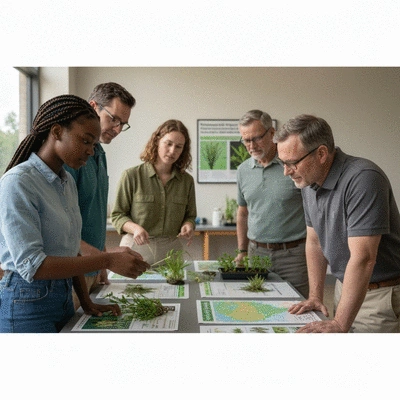
Encouraging Community Awareness and Reporting of Hydrilla Sightings
Community involvement plays a vital role in managing invasive species like hydrilla. For instance, the Journal of Aquatic Plant Management showcases how collaboration on biotypes aids in comprehensive management plans. By raising awareness and encouraging reporting, we create a network of vigilant individuals ready to act. Whether you're a professional or a concerned citizen, here’s how you can help:
- Share educational materials from the Hydrilla Conservation Initiative with your community.
- Organize local workshops or information sessions to discuss hydrilla and its impact.
- Set up a community reporting system for sightings of hydrilla in local waterways.
Every report counts! When community members report their findings, we can better track hydrilla's spread and implement effective control measures.
Final Tips for Effective Hydrilla Identification Throughout the Year
Effective hydrilla identification is a skill that improves with practice! Here are some final tips to keep in mind:
- Familiarize yourself with hydrilla’s key morphological traits during each season.
- Document your observations with photos, noting any changes in growth patterns.
- Collaborate with local environmental agencies to share insights and pool resources.
By following these tips, you can enhance your identification skills and contribute to a more comprehensive understanding of hydrilla's seasonal behavior.
Community Education and Invasive Management Programs: Collaborating for Better Outcomes
Collaboration is the cornerstone of successful invasive species management. At the Hydrilla Conservation Initiative, we are dedicated to empowering communities through education and shared resources. By participating in community education programs, you can:
- Gain access to expert-led workshops and identification training sessions.
- Join forces with other professionals and educators to develop impactful strategies.
- Stay updated on the latest policies and management techniques regarding hydrilla.
Together, we can create a united front against hydrilla and work towards the recovery of our vital ecosystems. Let’s take these steps together and make a difference! Are you ready to join the fight against invasive species?
Recap of Key Points
Here is a quick recap of the important points discussed in the article:
- Hydrilla is a highly invasive aquatic plant that can outcompete native species and disrupt ecosystems.
- Year-round monitoring of hydrilla is essential for effective management and control.
- Understanding seasonal variations in hydrilla growth helps in tailoring management strategies.
- Community awareness and reporting of hydrilla sightings can aid in tracking and controlling its spread.
- Familiarity with hydrilla's key morphological traits enhances identification efforts.
